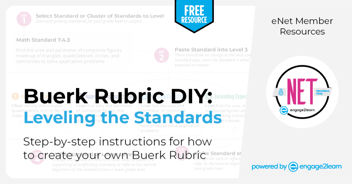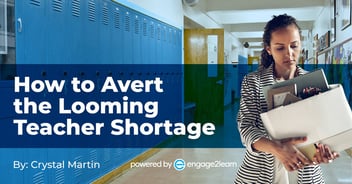The Magical Power of Goal Setting | engage2learn
If you ask any teacher what he or she desires for their students, be ready for a heartfelt response.
You might hear something like, “I want my students to be self-directed, have great communication skills, master the content and grow to be productive citizens.” These are many of the results that both teachers and students have at the start of each year.
However, somewhere between the first day PowerPoints on rules and the last day of school, these goals go to the back burner and the “regular business” of school begins. Goals become distant ideas and lost wishes. Although goals are important, they are often lost in translation within many classrooms.
Click To TweetThe truth is that goals have to be addressed with intentionality. They should remain a focus in daily activities within the classroom for to be a focal point, especially for students.
Goal setting can be a “Magical Power” teachers use, creating a more productive atmosphere for both teachers and students. With goals in mind, students can track their growth and gain more understanding about their strengths and weakness. Goal setting has always been a more internal skill successful students and teachers establish for themselves and Education is infamous for measuring content-based skills such as test scores, but we all know success is deeper than test scores. One of the first steps in facilitating goals for students is to explain the purpose of goal setting and help students understand that it can be helpful for their growth not only as students, but as people.
Creating a script for goal setting conversations is the first step to help your students set goals. This goal setting resource can help you design individual conversations with your students to guide conversations in a positive way. Within this template/script, not only are goals established, but students assess their current realities. Before knowing where you want to go, having some self reflection about where you are is key, and this resource should help you map that out.
Step 2 in goal setting is to establish whether the goal is short term or long term. Having a both a long term and short term goal is beneficial because it can give students a chance to achieve on several levels. Planting a few short term goals on the way to long term goals gives students a chance to grow and push towards larger goals.
Step 3 in goal setting is to help students decide on both content-based and personal goals aligned towards future ready skills. Many of the pitfalls of goal setting occur when students don’t have the necessary skills, such as communication, collaboration, creativity, and critical thinking, to reach their goals. It is also important for teachers to create opportunities for this growth within their classrooms. Creating dual goals and aligning content and future ready skills can assist students in reaching goals with a deeper focus on how to reach goals. This future ready skills assessment will help students gain a better understanding of their strengths and weakness as a foundation for growth.
Step 4 is to create a culture for goal setting within your classroom. One of the biggest hurdles most teachers face is a lack of time and figuring out when and where to goal-set. Making time is critical, as it sets lessons up and provides a focal point for students. This is easier to implement if each lesson or project is designed with goal setting as the center of the lesson.
Creating an openness in your classroom can help foster a more nurturing environment for students to feel more comfortable in aspiring to reach goals with fidelity. Click To TweetSet goals for yourself as a teacher and be candid about it with your students. Creating an openness in your classroom can help foster a more nurturing environment for students to feel more comfortable in aspiring to reach goals with fidelity. Tracking student progress with the learner tracker tool is also a great option. Start small but get started! Like anything we do, having aspirations and goals without a plan can be a daunting, and can leave people with a negative approach to reaching for more from themselves.
As educators we must realize that the efforts we put forth in the classroom can translate into lifelong skills. Set students up for success and give them a map of how to get there. Go forth and cast your spells of success with the magical power of goal setting.



